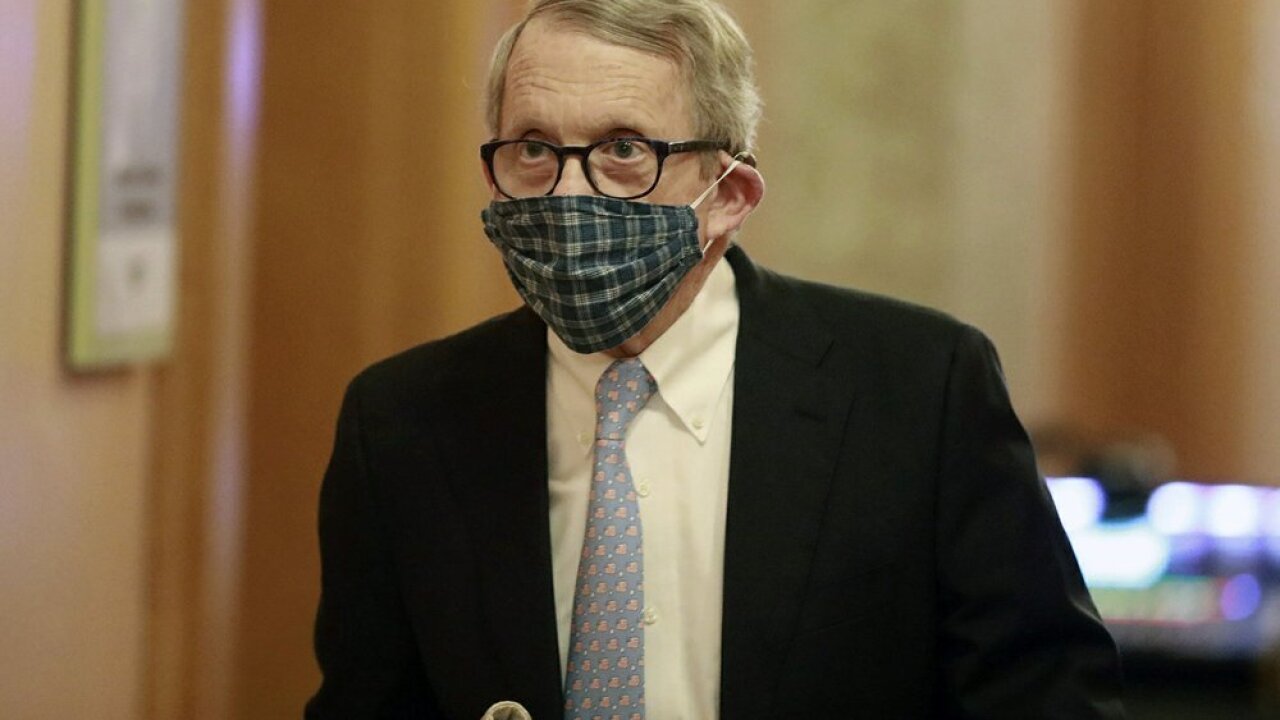Governor Mike DeWine provided his regular update on COVID-19 in Ohio on Monday, as ten hospitals across the state receive and prepare to administer the first rounds of the Pfizer vaccine to frontline workers in hospitals.
The first doses of Pfizer's COVID-19 vaccine arrived at UC Health Monday morning and the hospital has already vaccinated its first 20 frontline workers, according to Dr. Richard Lofgren, president and CEO of UC Health.
"We really feel that, with the first 20 that we got through, we’re going to be prepared to use the entire allotment of 975 really by Thursday of this week," said Lofgren.
So far, Lofgren said, the hospital network has identified 1,900 high-risk employees and frontline workers who have unavoidable contact with contaminated surfaces or COVID-19 patients daily and are in need of the vaccine.
The vaccines arrived at the hospital Monday morning and by the afternoon, the first person to be vaccinated in Cincinnati was Katie Walz, a registered nurse working in the cardiovascular ICU at UCMC.
"It actually went very well, I was very excited to be a pat of this new journey and hopefully it will encourage many others to be a part of this journey to help make the change in the world and to help keep others safe," said Walz.
Next week, DeWine said the Moderna vaccine is slated to receive approval and be ready to ship out a second round. The deployment will be aided by the Ohio National Guard to expedite shipments. The National Guard will partner with Cardinal Health, a healthcare logistics company in Dublin, Ohio, to ship the Moderna vaccine doses to 355 already determined locations within one day of receiving it.
Nursing homes could see their vaccination doses arriving a few days early, with deployment happening on Friday instead of the previously scheduled Dec. 21 deployment. The Centers for Disease Control and Prevention has invited Ohio to participate in an early, scaled launch of the vaccines which would roll out to five to 10 nursing homes in the state on Friday, DeWine said.
Despite the vaccination news, when DeWine pivoted to Monday's COVID-19 numbers, he said they remain unsustainable for healthcare workers throughout the state.
The Ohio Department of Health reported 7,875 new cases on Monday, fewer than the two-week average, but DeWine cautioned totals could be impacted by weekend reporting which has often made Monday's numbers less exact. ODH reported 59 new deaths, 291 new hospitalizations and 38 new ICU admissions across the state in the last 24 hours.
DeWine re-emphasized that the public should follow the "Ohio stay at home protocols" he unveiled during Thursday's COVID-19 update.
While we have great news today about the vaccine, it will take some time for everyone to get a vaccine. We must continue following our #StaySafeOhio Protocol for the next three weeks so we can #SlowTheSpread of the virus until more people can get the vaccine. pic.twitter.com/36mvueg3nc
— Governor Mike DeWine (@GovMikeDeWine) December 14, 2020
Every county in the state is still considered a "high incidence rate," meaning there is a high probability of community spread in those counties. Five counties in the state are considered "purple," indicating severe exposure and spread and health officials recommend only leaving home for supplies and services in those counties.
"We now have 30 counties of the 88 with a case rate over 1,000. So, exceedingly, exceedingly high," said DeWine. "As we have explained before, with 30 counties with a case rate above 1,000 – above 1,000 means that there is at least one person out of 100 in the community in the last two weeks who has tested positive. So that is a high rate of spread."
Among the top 20 counties with the highest incidence rate were Brown, Butler and Warren counties. Brown County was the fifth worst for cases per population, with 559 new cases between Nov. 29 and Dec. 12.
You can watch the full press conference below:



